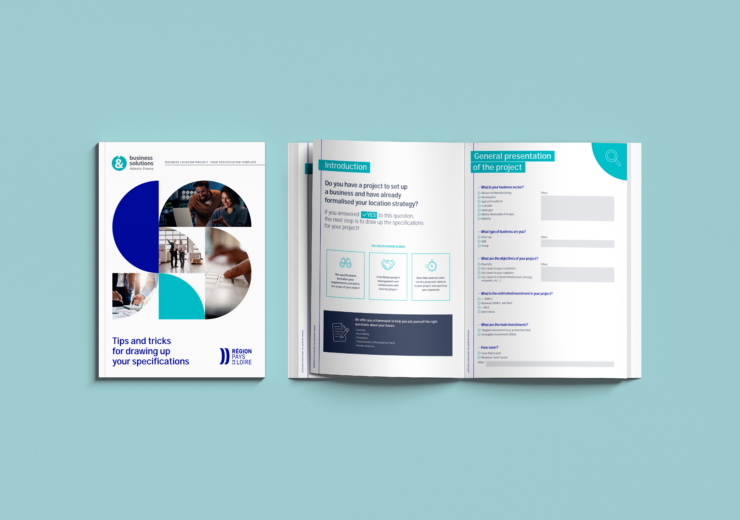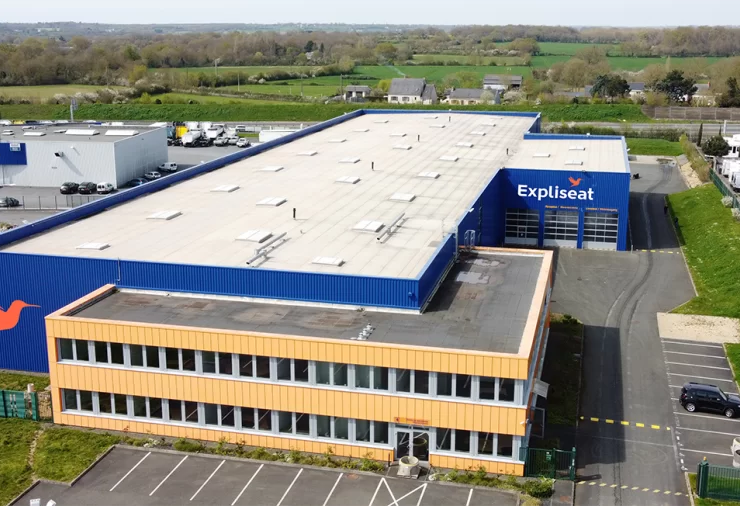
A pioneer in recycling carbon composite materials, Fairmat has taken a major step forward with the opening of its first factory in Bouguenais, near Nantes. Its founder, Ben Saada, shares the lessons learned from this experience. The aim is to inspire business leaders who also want to set up their first factory, particularly in an industrial region as dynamic as Atlantic France!
1/ Rethinking the very notion of creation: what if the factory already existed?
Creating a factory does not necessarily mean constructing a new building. Fairmat chose to renovate an existing 3,500 m² industrial site, a former factory in Bouguenais. This decision was guided by ecological, economic and operational common sense.
We started by recycling a factory. This is consistent with Fairmat’s mission, which is part of the circular economy.
The benefits are immediate: no building permits, shorter lead times, lower investment costs, and easier integration thanks to an existing local network of service providers. Taking over a building also means inheriting a culture, know-how, and even talent still present on site. Fairmat was thus able to rely on around twenty local partner companies, without having to start from scratch.
2/ Thinking of the product, technology, and site as an inseparable whole
Contrary to traditional industrial logic, which separates the stages such as R&D, product development, and site management, Fairmat designed the factory as the very heart of innovation. The Bouguenais site serves simultaneously as a production centre, a technology laboratory, and an industrial demonstrator.
For us, technology is the factory. And the factory is the product. We don’t develop processes in an external research centre and then replicate them. Everything is conceived and built on site.
3/ Adapt to the building rather than trying to adapt it to yourself
By choosing renovation over construction, Fairmat had to demonstrate flexibility and ingenuity. The factory was divided into three areas, with industrial flows organised accordingly. The layout of the workstations was carefully thought out to combine performance, ergonomics and adaptability.
We don’t force our machines into place. We design our production line according to the location.
This pragmatic approach avoids budget overruns, enables better team mobilisation and promotes a gradual ramp-up aligned with real world conditions.
4/ Being on site, close to the decision-making process
Creating a factory, even a partially existing one, remains a complex and large-scale project. Ben Saada is convinced that strong personal involvement is required. He himself moved to Nantes during the factory’s start-up year to oversee each stage and recruit the right people.
I had to make numerous technical and strategic decisions. If I hadn’t been on site, I wouldn’t have been able to keep track of everything.
Another key to success: the team. Fairmat called on experienced industrial professionals (site managers, maintenance engineers, technical managers) and a few external consultants with expertise in composites. The strong industrial base in the Atlantic France region enabled the company to recruit most of its workforce locally, with around 40 people now working on site.
5/ Relying on regional ecosystems
The decision to set up in Bouguenais was not obvious at first. But the site, the local dynamic, and the responsiveness of the Atlantic France Region’s services made the difference.
What convinced me was the ability of local players to take concrete and rapid action. From the prefecture to the DREAL, via Solutions&co, everyone worked together as a team.
The result: smooth integration, accelerated administrative procedures, and the factory’s launch in record time. For Ben Saada, it is essential to choose a region that not only aligns with the company’s values and needs, but also actively supports the project.
Extra tip: think of the factory as a living project!
More than a year after opening, the Fairmat factory is undergoing constant transformation. This summer, the company plans to reorganise its industrial flows to improve efficiency, while also continuing to invest. The next step: creating a closed recycling loop, where products incorporating Fairmat materials will return to the factory at the end of their life to be reprocessed. This programme, called Infinity Recycling, aims to achieve the first fully circular loop by 2027.
Do you have an industrialisation project?
Join the Impact Program, our free, tailor-made programme to guide you every step of the way (financing, identifying the ideal building or land, networking, and more).


 日本語
日本語  Français
Français 


